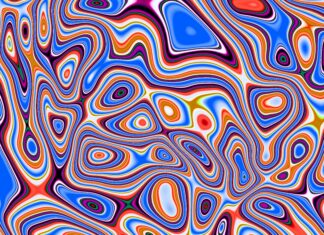The way we approach physical therapy is undergoing a fundamental transformation, and AI in the physical rehab tools is playing a leading role in this shift. From smart wearables to adaptive therapy algorithms, AI in the physical rehab tools is reshaping recovery pathways for stroke patients, athletes, and individuals recovering from surgery or chronic injuries. The potential of AI in the physical rehab tools cannot be overstated—it offers tailored recovery plans, real-time feedback, and data-driven decisions that enhance patient outcomes and therapist efficiency in extraordinary ways. As the industry embraces smarter solutions, overlooking these developments could mean missing out on faster recovery, better mobility, and long-term health gains.
1. AI Enables Hyper-Personalized Therapy Plans
One of the most significant advantages of AI in physical rehab tools is the shift from standardized treatment to hyper-personalized therapy. Traditional physical rehabilitation programs often apply a one-size-fits-all approach, but AI allows therapists to design plans based on a wide array of patient-specific data.
Using machine learning algorithms, AI can analyze factors like age, gender, mobility range, pain levels, previous injury history, and even genetic markers to customize exercises. These systems continuously refine and adjust treatment regimens in real-time based on patient performance and progress metrics, creating a dynamic recovery environment. This personalization enhances outcomes by addressing the unique needs and pace of each patient, ensuring better compliance and faster healing.
2. Real-Time Motion Analysis for Precision Feedback
AI-driven motion tracking is revolutionizing the way physical therapists monitor exercises. Through computer vision and sensor-based technologies, AI systems can analyze a patient’s posture, joint alignment, and muscle engagement in real-time.
For instance, a smart camera setup or wearable sensors can detect whether a patient is performing a squat correctly or compensating with the wrong muscles. The AI then provides immediate feedback through an app or monitor, reducing the risk of injury and improving performance.
This constant visual and sensory feedback loop is especially valuable for remote physical therapy, where clinicians cannot always be physically present. It bridges the gap between clinic visits and at-home practice, ensuring adherence and accuracy.
3. AI-Powered Robotics for Assisted Movement
AI in the physical rehab tools is also manifesting in robotic devices that aid movement and rebuild muscular strength. Robotic exoskeletons and therapy robots are now integrated with intelligent systems that adapt to a patient’s needs during recovery.
These robots can sense the patient’s muscle tone, limb resistance, and fatigue levels, then adjust their support levels in real-time. For example, in gait training for stroke survivors, robotic legs may initiate steps with the patient but gradually reduce assistance as strength returns.
This AI-enhanced adaptability helps patients achieve more repetitions, more safely, and with a lower risk of injury. Therapists benefit from detailed analytics, while patients benefit from improved mobility and confidence.
4. Predictive Analytics to Anticipate Outcomes
One of AI’s strongest suits is its predictive capability. In rehabilitation, this means AI can assess massive datasets—including patient histories, therapy responses, and injury types—to predict recovery timelines and potential complications.
For example, based on initial assessments and ongoing performance, an AI model can forecast when a patient might regain full range of motion or predict the likelihood of chronic pain. This helps clinicians manage patient expectations, adjust plans accordingly, and intervene earlier if recovery is off track.
This data-driven foresight enhances decision-making and significantly boosts patient satisfaction by setting realistic and informed recovery goals.
5. Enhanced Gamification for Motivation and Engagement
Sticking to a physical therapy routine can be difficult for many patients, especially when exercises are repetitive and progress is slow. AI introduces engaging gamification techniques that keep users motivated throughout their recovery journey.
AI-enabled rehab tools use interactive platforms, virtual reality (VR), and motion-based games to turn boring exercises into enjoyable activities. These games adapt in difficulty based on patient performance, offering new challenges and rewards as progress is made.
By tracking user behavior, the AI can determine which games or exercises boost engagement the most and suggest them more frequently. This not only enhances adherence but also improves clinical outcomes through consistent and enjoyable rehabilitation sessions.
6. Remote Monitoring and Virtual Rehab
AI in physical rehab tools has become particularly valuable for remote care. Tele-rehabilitation platforms embedded with AI allow clinicians to remotely monitor patients through wearable devices, smartphone apps, and motion sensors.
These platforms track exercise completion, range of motion, muscle strength, and even biometric signals like heart rate. AI then interprets the data and flags any red flags such as limited improvement, poor compliance, or abnormal patterns that may indicate complications.
This real-time monitoring makes physical therapy accessible even in rural or underserved areas. It reduces the need for in-person visits and gives therapists actionable insights to guide remote consultations, ensuring no patient is left behind.
7. AI for Cognitive and Neurological Rehab
While physical rehab often focuses on musculoskeletal issues, AI also aids cognitive and neurological recovery. For patients recovering from brain injuries, strokes, or neurodegenerative diseases, physical and cognitive rehab often go hand in hand.
AI-powered tools can assess coordination, balance, memory, and reaction time. Virtual therapists guide patients through both physical and cognitive exercises, adjusting the tasks based on real-time performance.
These dual-purpose platforms help stimulate neuroplasticity, encouraging the brain to form new pathways that enhance both movement and cognition. The result is a more holistic and effective recovery process, particularly for complex rehab cases.
8. Intelligent Documentation and Workflow Optimization
AI isn’t just changing how therapists treat—it’s changing how they work. Many rehab professionals spend a large chunk of their day documenting patient progress, creating treatment notes, and managing scheduling. AI automates much of this work.
Speech-to-text tools can transcribe therapist observations into electronic health records. Natural language processing helps categorize and summarize reports, while AI-driven scheduling assistants optimize appointments based on patient needs and therapist availability.
By reducing administrative burdens, AI allows therapists to focus more on direct patient care. Clinics become more efficient, and patients benefit from more time with their providers.
9. Adaptive Learning and Continuous Improvement
A key feature of AI systems is their ability to learn over time. As more data flows through physical rehab tools, AI algorithms become more accurate in detecting issues, suggesting therapies, and forecasting outcomes.
This continual learning model ensures that the tools are always improving. For example, if a system identifies that a certain type of exercise yields better results for ACL recovery across various patients, it can prioritize those methods in future recommendations.
As a result, care protocols evolve faster than traditional research cycles would allow, offering state-of-the-art rehabilitation that adapts to new discoveries and real-world trends in patient recovery.
10. Integrating Mental Health Insights into Physical Therapy
Physical rehabilitation is closely linked with emotional resilience. Many patients experience depression, anxiety, or frustration during long recovery periods. AI is beginning to recognize and respond to these emotional states.
Using sentiment analysis and behavioral data, AI tools can detect mood changes through speech patterns, app interaction frequency, or physiological data (like sleep or heart rate variability). If a patient is disengaged, the AI might suggest mental wellness resources, adjust exercise intensity, or notify the therapist.
This emotional intelligence embedded in physical rehab tools ensures a more compassionate, complete approach to healing—addressing both the body and mind.
Conclusion
AI in the physical rehab tools is no longer a futuristic idea—it’s here and changing lives every day. These tools are reshaping how physical therapy is planned, executed, and monitored. From robotic exoskeletons and smart wearables to predictive analytics and personalized treatment plans, AI has introduced a level of intelligence, adaptability, and precision that manual rehabilitation simply cannot match.
Therapists benefit from clearer insights and efficient workflows. Patients enjoy better outcomes, faster recovery, and a more engaging rehab experience. And healthcare systems as a whole see reduced costs, optimized care delivery, and improved satisfaction.
Ignoring the rise of AI in physical rehabilitation means staying behind in a world that is rapidly moving forward. Embracing these tools not only improves outcomes today—it future-proofs rehabilitation services for the challenges and opportunities of tomorrow.





























